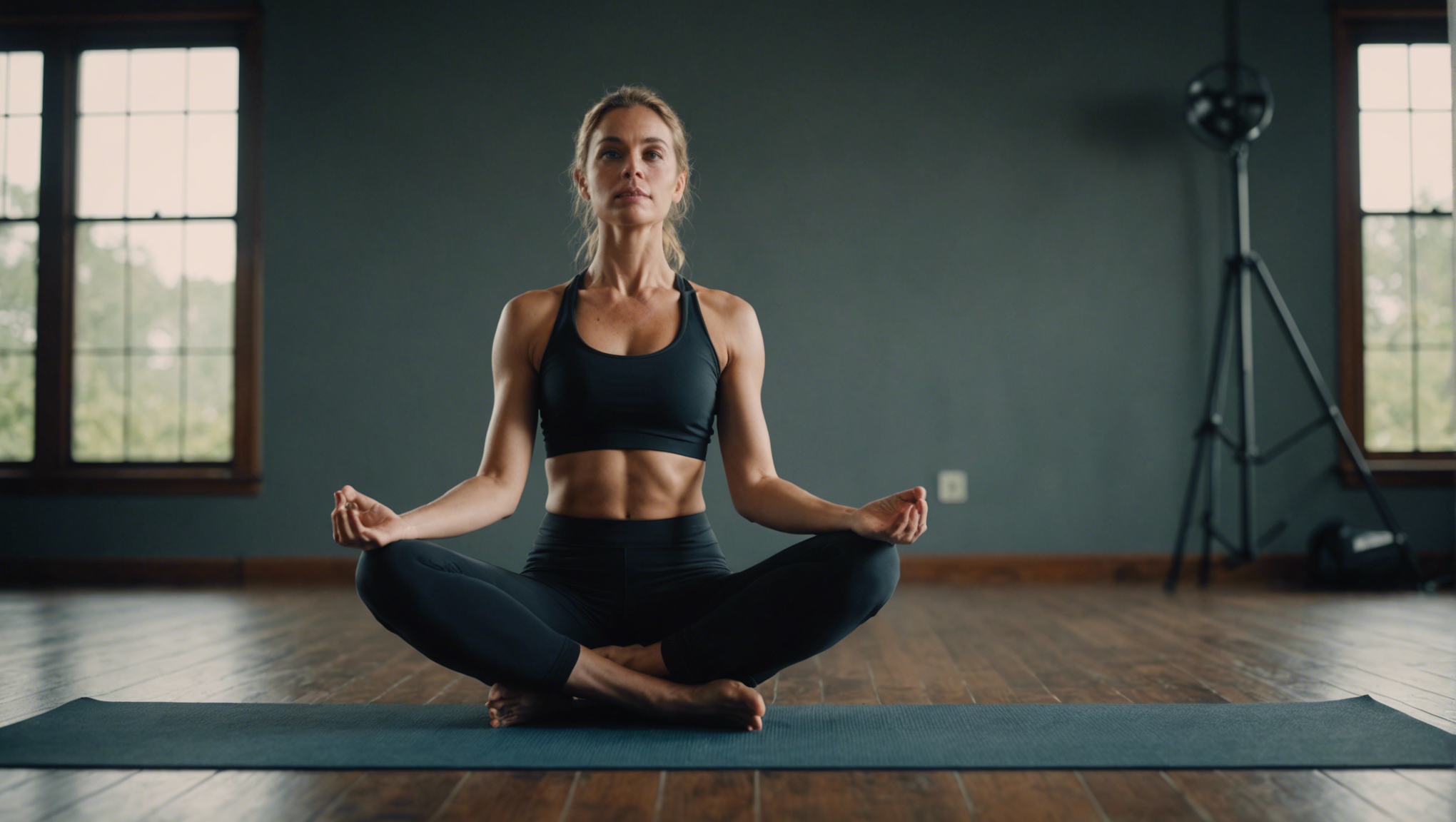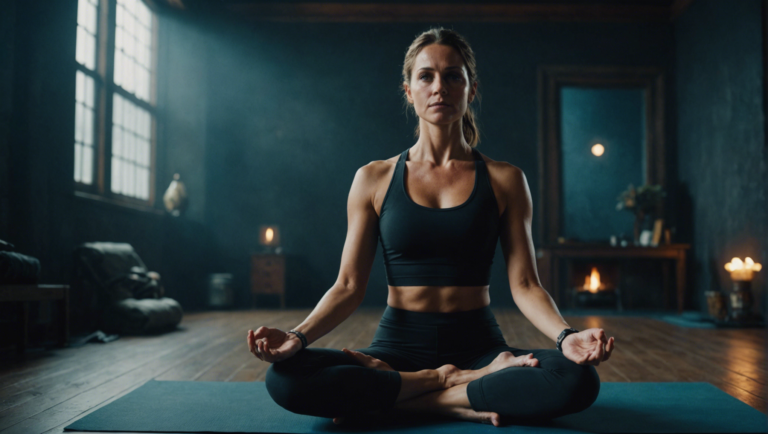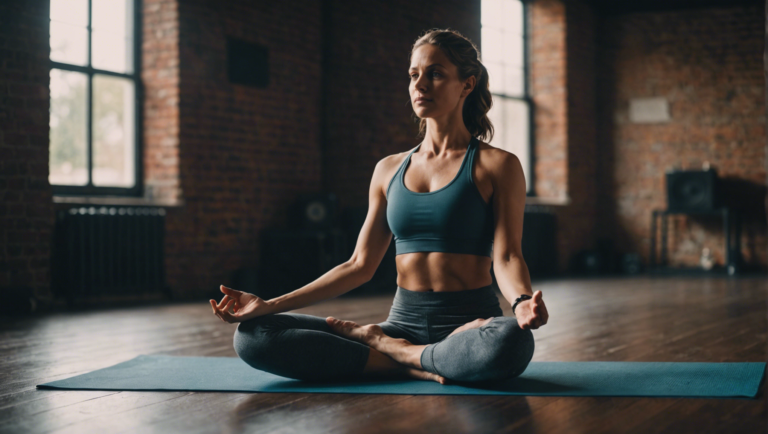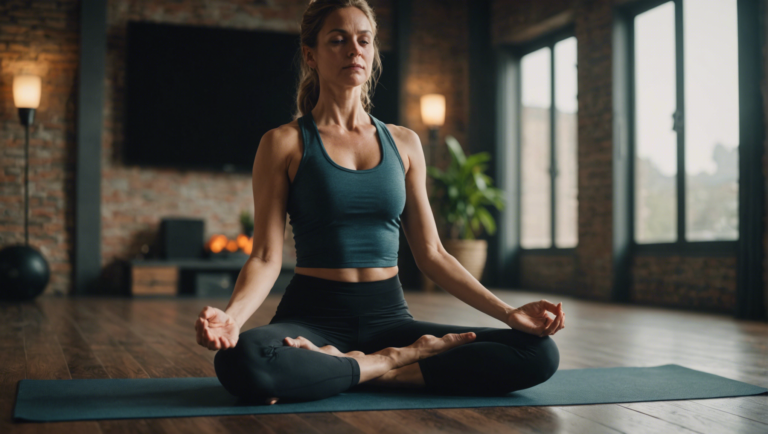Should You Practice The Same Yoga Routine Everyday? Insights And Recommendations
Exploring the Pros and Cons of a Daily Yoga Routine
Yoga, an ancient practice rooted in Indian philosophy, has gained widespread recognition for its physical, mental, and spiritual benefits. However, the question often arises: Is it beneficial to engage in the same yoga routine every day? Let’s delve into the multifaceted aspects of maintaining a daily yoga practice, examining both the advantages and drawbacks, and offer personalized recommendations.
Benefits of a Daily Yoga Practice
Consistency Builds Discipline
The primary advantage of a daily yoga practice is the cultivation of discipline. Making yoga a non-negotiable part of your daily routine fosters a sense of commitment and consistency. It trains the mind and body to embark on the mat at the same time each day, aiding in the formation of a healthy habit.
Deepen Your Practice
Repetition is the mother of learning. Performing the same yoga sequences daily allows for a deeper understanding of each posture (asana). Over time, this repeated exposure not only improves your technique but also deepens your awareness of the body’s subtle changes and reactions to each pose.
Stress Reduction
The continuity of a daily practice provides a reliable and constant method to alleviate stress. The rhythmic breathing and meditative aspects of yoga work to calm the mind, reduce cortisol levels, and evoke a state of mindfulness and centeredness.
Challenges of a Daily Repetitive Yoga Routine
Risk of Repetitive Stress Injuries
One of the primary concerns with practicing the same routine daily is the increased risk of repetitive stress injuries. Continuously working the same muscle groups without proper rest or variation can lead to strains and injuries over time.
Plateauing Progress
Another potential downside is the plateau effect. The human body is remarkably adaptive and can become accustomed to regular routines, resulting in diminished gains from the practice. If growth and improvement are your goals, varying your practice might be more beneficial.
Boredom and Loss of Motivation
Repeating the same sequence day after day may also lead to boredom. For some practitioners, the lack of variety can diminish enthusiasm and motivation, potentially leading to a decrease in the overall frequency of practice.
Recommendations for a Balanced Approach
Incorporate Variation
To maximize the benefits of a daily practice while minimizing its drawbacks, incorporating variation into your routine is key. This doesn’t necessarily mean changing your entire practice each day but rather introducing small modifications or focusing on different aspects of your practice regularly.
Listen to Your Body
Paying close attention to your body’s signals is crucial. If you notice any discomfort or signs of potential overuse, it may be time to adjust your routine. This mindfulness will help in preventing injuries and ensuring a sustainable practice.
Seek Professional Guidance
Working with a knowledgeable yoga instructor can provide personalized insights into your yoga journey. They can recommend modifications and variations that align with your goals and physical condition, ensuring a safe and effective practice.
Diversify Your Practice
Consider blending different styles of yoga into your weekly routine. For instance, if your primary practice is Ashtanga, try incorporating a Yin or Restorative class once a week. This diversification not only prevents monotony but also rounds out your practice by emphasizing flexibility, recovery, and mindfulness.
Final Thoughts
A daily yoga practice offers numerous benefits, from enhancing discipline to deepening your connection to your mind and body. However, the decision to stick with the same routine every day comes with considerations, especially regarding the potential for injuries and the plateau effect. By integrating variety, listening to your body’s needs, and seeking professional advice, you can maintain a balanced, fulfilling, and sustainable yoga practice. Remember, the journey of yoga is deeply personal, and the best practice is one that aligns with your individual needs, goals, and wellbeing.
How Variety in Yoga Poses Enhances Physical and Mental Health
The practice of yoga is renowned for its ability to unite the mind, body, and spirit through a series of poses, breathing exercises, and meditation. While the notion of adhering to a set routine might appeal to those seeking consistency in their practice, exploring a variety of yoga poses offers multifaceted benefits that can significantly enhance both physical and mental health. This exploration delves into the advantages of diversifying one’s yoga practice and provides insights on how it promotes holistic health and wellbeing.
The Impact of Variety on Physical Health
Engaging in a varied yoga practice introduces the body to a wide range of movements, targeting different muscle groups and enhancing overall flexibility, strength, and balance. When you expose your body to various poses, you prevent repetitive strain and reduce the risk of injury that can come from performing the same movements daily. This diversity not only helps in building a more balanced physique but also aids in improving proprioception—the sense of how your body is positioned in space.
A dynamic practice that includes both challenging poses and restorative stretches can significantly impact endurance levels. For instance, holding poses for longer durations strengthens the muscles, while transitioning smoothly between different poses can boost cardiovascular health. Moreover, incorporating poses that focus on different areas of the body ensures that no single muscle group is overworked, leading to a more harmonious development of physical fitness.
Enhancing Mental Health Through Variability
The mental health benefits of yoga are well-documented, ranging from reduced stress and anxiety to improved concentration and overall mood. By introducing variety into your practice, you stimulate the brain in new and challenging ways, which can help to keep the mind engaged and present. This constant learning and adaptation process can foster a sense of accomplishment and confidence as you navigate and master new poses.
Variety in yoga poses also mirrors the unpredictability of life, teaching practitioners to adapt to change with grace and resilience. This adaptability can lead to a decrease in stress as individuals become more adept at managing unexpected challenges in their daily lives. Furthermore, the practice of different yoga styles, from the slow and meditative Yin to the vigorous and energetic Vinyasa, allows individuals to cater to their mental health needs according to their mood and energy levels.
Recommendations for Integrating Diversity into Your Yoga Practice
To fully reap the benefits of a diverse yoga practice, it’s recommended to vary not only the poses but also the sequencing, pace, and style of yoga. Attend classes with different instructors to experience new perspectives and techniques. Alternatively, online platforms offer a plethora of yoga routines focusing on various themes and objectives, providing an easy way to introduce novelty into your practice from the comfort of your home.
Listening to your body is paramount; choose poses and sequences that align with your physical capabilities and health goals. Challenge yourself with more advanced poses as your flexibility and strength improve, but also recognize the importance of restorative practices for recovery and balance.
The Role of Mindfulness and Consistency
While embracing diversity in your yoga practice, maintaining a consistent schedule and cultivating mindfulness is crucial. Regular practice, regardless of the variety, is essential for experiencing the long-term benefits of yoga. Meanwhile, being mindful and fully present during each session enhances the connection between mind and body, amplifying the health benefits and promoting a deeper sense of inner peace.
Varying your yoga practice can substantially enhance both physical and mental health, contributing to a more balanced and fulfilled life. By embracing change and challenging your body and mind in new ways, you can experience the profound benefits that yoga has to offer in a more holistic and enriching manner.
The Role of Adaptability in Your Yoga Practice
The Importance of Flexibility in Yoga Training
Yoga, an ancient practice known for its holistic benefits to both mind and body, thrives on the principle of balance. Among the myriad aspects that contribute to a well-rounded yoga practice, adaptability stands out as a pivotal element, often overlooked in the quest for perfection within poses or sequences. This adaptability—referring to the willingness and ability to modify one’s practice in response to different circumstances, needs, and stages of life—is the cornerstone of a sustainable and enriching yoga journey.
Understanding the Needs of Your Body
Yoga teaches us to listen to our bodies, responding to its cues with kindness and intention. Every day presents a new narrative in the story of our physical and emotional states. Some days, the body craves the vigor of a Vinyasa flow; on others, it seeks the stillness and depth of a Yin practice. Embracing adaptability in yoga means recognizing and honoring these fluctuations without judgment, allowing the practice to morph as a reflection of our inherent daily changes.
The Evolution of Personal Practice
The evolution of one’s yoga journey is a testament to the transformative power of adaptability. As practitioners advance from beginners to more experienced yogis, their practice similarly transitions, often becoming deeper and more introspective. What once served as a physical challenge now transforms into an opportunity for spiritual awakening and self-reflection. This evolution underscores the importance of adaptability, highlighting the need for practices that grow with us, fostering resilience and strength in both body and mind.
The Impact of Adaptability on Teaching Methods
For yoga instructors, adaptability translates into the ability to meet students where they are, adjusting teachings to accommodate varying levels of experience, physical abilities, and personal goals. This flexibility not only enhances the learning experience but also fosters an inclusive environment where all practitioners feel valued and supported. By modeling adaptability, teachers impart a crucial lesson: yoga is not a one-size-fits-all practice, but a diverse tapestry of experiences that enriches our lives in myriad ways.
Encouraging a Personalized Yoga Experience
The quest for adaptability in yoga also encourages a personalized practice, one that aligns with the individual’s unique physical needs, interests, and spiritual inquiries. This tailored approach demystifies the notion that there is a "right" way to practice yoga, instead celebrating the diversity and personalization that adaptability brings to the forefront. It is in this personalized practice that yogis often find the most profound growth, healing, and self-awareness.
Navigating Life’s Challenges with Adaptability
Beyond the mat, the adaptability cultivated through yoga serves as a formidable tool in navigating the ebb and flow of life. The same principles that teach us to modify a pose or embrace a restorative practice instead of a dynamic sequence also teach us to approach life’s challenges with flexibility, resilience, and grace. This transferability of skills underscores the comprehensive benefits of yoga, extending its impact far beyond the physical postures to influence our approach to life itself.
Adaptability in yoga is not merely a practice but a philosophy that, when embraced, enhances every aspect of one’s journey through yoga and life. It encourages continuous learning, fosters inclusivity, and promotes a deep, personal connection to the practice that is both empowering and transformative. By valuing and cultivating adaptability, yogis of all levels can ensure their practice remains vibrant, sustainable, and deeply enriching, today and in the years to come.
Incorporating Mindfulness and Intention Setting into Your Yoga Routine
The intertwining of mindfulness and intention setting with your yoga practice opens up a pathway to deeper self-awareness and a more fruitful yoga experience. This integrative approach not only amplifies the physical benefits of yoga but also enhances mental and emotional well-being, fostering a profound connection between body and mind.
Mindfulness: A Foundation for Deeper Yoga Practice
Mindfulness, the quality of being fully present and engaged in the moment without judgment, is a core tenet that can transform your yoga routine into a more impactful practice. By directing your attention to your breath, movements, and the sensations in your body, you cultivate an acute awareness that guides you to a state of inner stillness and focus. This attention to the present moment enriches your yoga experience, allowing for a more connected and introspective practice that extends beyond the mat into daily life.
Setting Intentions: Charting the Course of Your Practice
The act of setting intentions before beginning your yoga poses can serve as a powerful tool to focus your mind and direct your energy. Unlike specific goals or resolutions, intentions are more about aligning your values and actions, embracing the journey rather than fixating on the outcome. This mindful approach helps in cultivating qualities such as gratitude, patience, or strength, both on and off the mat. It acts as a reminder of why you come to the yoga mat, creating a purposeful and personalized practice.
Steps to Integrate Mindfulness and Intention into Your Yoga Routine
To seamlessly weave mindfulness and intention setting into your yoga practice, consider the following strategies:
-
Create a Conducive Environment: Ensure your practice space is clean, quiet, and free from distractions. This physical setting mirrors the mental space you aim to create and sustain throughout your session.
-
Begin with a Moment of Stillness: Sit comfortably, close your eyes, and bring your focus to your breath. This initiates the shift from the external to the internal, signaling to your body and mind that it’s time to practice.
-
Craft Your Intention: Reflect on what brought you to the mat and how you wish to feel during and after the practice. Formulate a positive, present-tense statement that encapsulates this intention.
-
Incorporate Breath Awareness: As you move through your poses, keep your breath synchronized with your movements, using it as an anchor to bring you back to the present moment whenever your mind wanders.
-
Tune into Your Body’s Signals: Pay attention to the sensations in your body, observing without judgment. This body awareness is a cornerstone of mindfulness, encouraging a practice that respects your body’s limits and needs.
-
Close with Gratitude: End your session by revisiting your intention and reflecting on your practice with gratitude. Acknowledge your efforts and any insights that arose, carrying this sense of appreciation with you off the mat.
The Path Forward: Embracing a Mindful Approach
Embracing mindfulness and intention setting within your yoga practice is a journey of continuous exploration and discovery. This approach not only deepens your connection to yoga but also cultivates qualities that enhance your overall quality of life. By being present and intentional, you unlock a more meaningful and transformative yoga experience that resonates beyond physical asanas, influencing how you navigate the world around you.
The integration of these elements into your yoga practice serves as a gentle reminder of the power of the present moment and the impact of our intentions on our well-being. As you continue this practice, observe the shifts in your physical, mental, and emotional states, allowing the insights gained to guide your path both on and off the mat. In doing so, you foster a practice that is not just about flexibility or strength but also about cultivating mindfulness, intention, and a deeper sense of purpose in every pose and breath.
Navigating Stagnation and Plateaus: When to Change Your Yoga Routine
Recognizing the Signs of a Yoga Plateau
Practicing yoga consistently can usher in a wave of benefits, from improved flexibility and strength to enhanced mental clarity. However, for many enthusiasts, there comes a time when the leaps in progression start to wane, ushering in the dreaded plateau. A yoga routine, no matter how meticulously crafted, may eventually become too familiar to both mind and body, leading to a stagnation in growth.
Experts suggest that the first step is recognizing the signs of this yoga plateau. These can range from feeling less challenged during practice, experiencing boredom, or no longer noticing improvements in strength, flexibility, and balance. When your practice feels more like a chore than a journey of discovery, it could be time to re-evaluate and refresh your yoga routine.
Strategies for Overcoming a Yoga Plateau
Altering your yoga routine doesn’t necessarily mean a complete overhaul. Sometimes, small adjustments can reignite the passion and progress. Here are several strategies recommended by yoga professionals:
-
Vary Your Practice Intensity: Consider mixing up the intensity of your workouts. If you’ve been sticking to gentle or restorative classes, try incorporating more vigorous styles like Vinyasa or Ashtanga.
-
Experiment With New Poses: Adding new asanas to your routine can present fresh challenges for your body and mind. Seek poses that target areas you’ve perhaps neglected or deemed too challenging.
-
Take Your Practice Outdoors: Changing your environment can dramatically shift your perspective and inject new life into your practice. Whether it’s a peaceful backyard or a calm beach, nature can significantly enhance the yoga experience.
-
Join Workshops or Retreats: Participating in yoga workshops, retreats, or even online courses can introduce you to new practices, philosophies, and the yoga community. Learning under different instructors can also provide new insights and techniques.
Adjusting Your Mindset for Growth
A plateau is not merely a physical stalemate but often a mental one. Embracing a mindset geared towards growth and curiosity is crucial. Reflect on your initial motivations for practicing yoga and set new goals, whether they’re mastering a particular pose, enhancing your meditation practice, or attaining better focus. Celebrating small victories along the way can also maintain motivation and foster a positive outlook towards your evolving practice.
Listening to Your Body
While striving for progress, it’s essential to stay attuned to your body’s signals. Yoga is fundamentally about harmony between body and mind, not pushing through pain or discomfort for the sake of achievement. If your body requires rest or a more gentle approach on certain days, it’s crucial to honor that. Remember, yoga is a personal journey that should cater to your well-being first and foremost.
Seeking Guidance from Yoga Professionals
Sometimes, an external perspective can prove invaluable. Experienced yoga instructors can offer tailored advice and modifications to help you break through your plateau. They can assess your form, suggest new approaches, and even recommend lifestyle adjustments that complement your yoga practice, such as diet changes or mindfulness techniques.
Overcoming a yoga plateau requires a blend of physical adaptations, mental shifts, and possibly guidance from professionals. By staying observant, open to change, and dedicated to personal growth, yogis can navigate these plateaus successfully. Remember, the plateau is not the end of your yoga journey but a signpost, indicating it’s time to explore new horizons within your practice.
Conclusion
Embarking on a journey through the intricate world of yoga reveals a treasure trove of benefits that can significantly influence one’s physical and mental well-being. Taking a deeper dive into the structure and variation of yoga practices, it becomes evident that the merits of adhering to a daily yoga routine versus embracing diversity in practice are multifaceted, reflecting in various aspects of health and personal growth.
The exploration into the advantages and drawbacks of maintaining a consistent daily yoga sequence has shed light on the fundamental principles that make yoga such a transformative practice. A routine offers the comfort of familiarity, allowing for the refinement of form and the deepening of poses, which can lead to significant improvements in strength, flexibility, and balance. However, this journey has also unveiled the limitations of a monotonous practice regimen, ranging from the increased risk of repetitive strain injuries to the potential stifling of mental stimulation and motivation.
Delving further into the benefits of injecting variety into one’s yoga practice, it becomes clear that diversity in poses and sequences can act as a catalyst for holistic physical and mental health. Through varying the practice, the body is challenged in new and dynamic ways, engaging different muscle groups, promoting flexibility, and preventing overuse injuries. Equally important is the mental and emotional stimulation that comes from exploring new forms of yoga, which can enhance cognitive flexibility, alleviate boredom, and sustain motivation over time.
The significance of adaptability in yoga practice resonates deeply with the inherent variability of human life and needs. Adapting one’s practice to the ever-changing physical and emotional states can serve not only as a means of optimizing health benefits but also as a way of practicing self-compassion and mindfulness. This flexible approach encourages individuals to tune into their bodies’ needs and adjust their practice accordingly, fostering a deeper connection with oneself.
Mindfulness and intention setting into one’s yoga practice offers a profound layer of depth to the physical movements and postures. This approach transforms the practice from a mere physical exercise into a holistic embodiment experience, nurturing a state of mental clarity and emotional equilibrium. Setting intentions guides the mind to focus, infusing each session with purpose and meaning, which can significantly amplify the benefits of the practice on and off the mat.
Understanding when and how to navigate stagnation and plateaus in one’s yoga journey is crucial for sustained growth and engagement. Recognizing the signs of a plateau—such as a lack of progress, diminished enthusiasm, or persistent discomfort—signals the need for change and adaptation in the routine. Embracing this change, whether by introducing new styles, adjusting the intensity, or seeking guidance, can reinvigorate one’s practice, spur personal development, and maintain a positive trajectory towards wellness.
Each aspect of the yoga practice discussed—be it the structure of routine, the value of variety, adaptability, mindfulness, or overcoming stagnation—interweaves to form a comprehensive view of a path that is as spiritual and mental as it is physical. It becomes clear that the decision to adhere to a daily yoga practice or introduce variability should not be viewed as mutually exclusive. Instead, a balanced, informed, and intuitive approach—one that combines the benefits of consistency with the enriching experience of exploration—can provide the most rewarding and holistic outcomes.
The insights garnered from this exploration invite practitioners and enthusiasts alike to reflect deeply on their personal yoga journey, considering their unique needs, goals, and circumstances. In doing so, one can sculpt a practice that not only honors the tradition and discipline of yoga but also celebrates the individual’s path towards self-discovery, health, and harmony. This, in essence, encapsulates the transformative promise of yoga—a practice that adapts, evolves, and flourishes alongside the practitioner, offering a sanctuary of balance in the flux of life.




